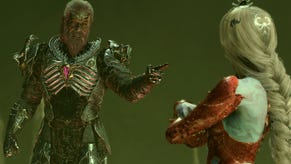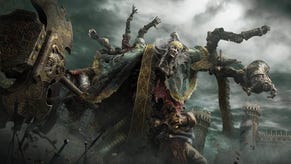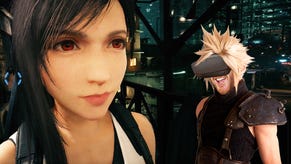DF Retro takes on the epic Final Fantasy 7 saga
Revisiting a JPRG game-changer - and the 23 years of waiting for the remake.
The recent release of Final Fantasy 7 Remake is the end of a long, long story - and the beginning of a new one. One of the most significant releases in the original PlayStation's library, FF7 redefined the JRPG with its combination of pre-rendered backgrounds, real-time 3D and stunning CG video sequences. Beyond the technology, the world and characters of the game had far more of an impact across the years than any Final Fantasy before or after, leading to numerous ports of the title, off-shoot games and even CG movies. It's a worthy topic for Digital Foundry Retro - but the sheer scale and scope of the project required us to push further than we ever have before.
You can see the results embedded in the video below, but even before we factor in the asset collection and research, there's the simple matter that this is a role-playing game - a genre we've not tackled on DF Retro before. This required 20 hours of capture for the PlayStation version alone simply to get representative samples of the whole run of the game, with a further 10 hours of capture from the PC version.
As you'll see in the video, the endgame in itself has an interesting technical angle, and that required access to a PS1 game save. Having lost my own saves from back in the game, Coury Carlson from My Life In Gaming stepped up, providing his own save from his time playing FF7 in his childhood. Data was sent over the internet, and I used a USB to PS Memory Card adapter to bring the data across from PC to PlayStation 3 to PlayStation 1 in order to run on original hardware.
There's a lot of archive footage and photography in this piece and this presented another problem - in fact, it's a challenge for many of our DF Retro projects. Put simply, many assets don't exist in anything like decent quality, are presented at super low resolutions or may only exist in analogue formats which can degrade over time. For the first time in a DF Retro project, we experimented with the new wave of AI upscaling tools to increase the quality level.
These programs are fascinating: AI is 'trained' to recognise objects or to filter out artefacts and in many cases can prove transformative (but equally, in some cases, its effectiveness is limited). AI upscaling was also used to improve the quality of the Final Fantasy 6 CG footage, and the best quality version of the source I found was located on an old Japanese demo disc that featured Final Fantasy 7. It was also interesting to track down some of the development images that have propogated across the web over the years. These seem to originate from a press disc that was originally given away way back at ECTS 1997 - I was able to locate an image of that disc on archive.org in order to get hold of the source assets. This disc also hosted some video assets, though 120x88 resolution, there wasn't really much that could be done with those!
For DF Retro, we also try to get the best possible quality from our game captures. There's not really any special model of PlayStation 1 that delivers better quality than any other, most do a good job. I captured the 240p RGB SCART signal via OSSC (Open Source Scan Converter) into a Datapath capture card. Meanwhile on the PC front, I owned the original release of that version and ran it on my recently acquired Pentium 3 retro PC, where I've been gradually acquiring a range of era-appropriate video cards. In this case, Voodoo Graphics was the best accelerator for the job and this was captured using a USB 3.0 Micomsoft XCapture-1 via VGA, which produces the best result - even better than I could extract from the OSSC. Finally, Crisis Core footage from PSP was again derived from original hardware, this time with component output piped through the OSSC.
Additionally, for those looking for a greater understanding of how Final Fantasy 7 and its various component engines work (yes, there are actually five engines within the game), I highly recommend checking out the Gears PDF by Joshua Walker and the 'Qhimm Team'. It was really useful in putting together this DF Retro project, but we've only really scratched the surface - there's far more in-depth detail within its pages.
Finally, as part of this project, I was interested in checking out Square's various forays into CG movies. Arguably it was Final Fantasy 7's shift to full-motion video sequences that paved the way for Square to branch out into actual movie making. Viewed years on, I'd say that Final Fantasy: The Spirits Within - a film that was slated at the time - fares significantly better than the Blu-ray FF7: Advent Children. These movies also serve to highlight just how much of a leap we've seen in rendering over the years. Take a look at the sheer quality of Final Fantasy 7 Remake's real-time visuals running at 1080p on a seven-year-old mainstream console. Yes, there are compromises - particularly in terms of geometry - but materials, lighting, effects and so much more look so much better, and I can't wait to see how the next chapter in the Final Fantasy 7 remake works out, particularly as we may well see the series transition into the next generation of console hardware.










